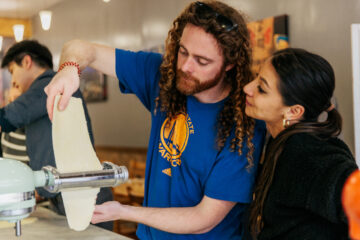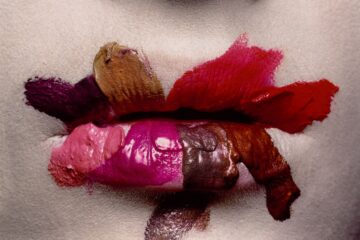Lee Mingwei: Rituals of Care at de Young
If your heart was feeling weary, from carrying the the weight of the world and someone offered you a small journey to relieve that pressure, would you take it?
Lee Mingwei’s first survey exhibition in the United States “Rituals of Care” will take place at the DeYoung from February 17- July 7. The artist questions how his work might encourage social connection and positive transformation. A seemingly tall order in a time when headlines aim to wound and a trail of loss dogs our footsteps.
This experience is carefully set up for a viewer to move through as if on a mythical quest. On this journey, viewers may explore their sense of individuality in the world and find their power within it.
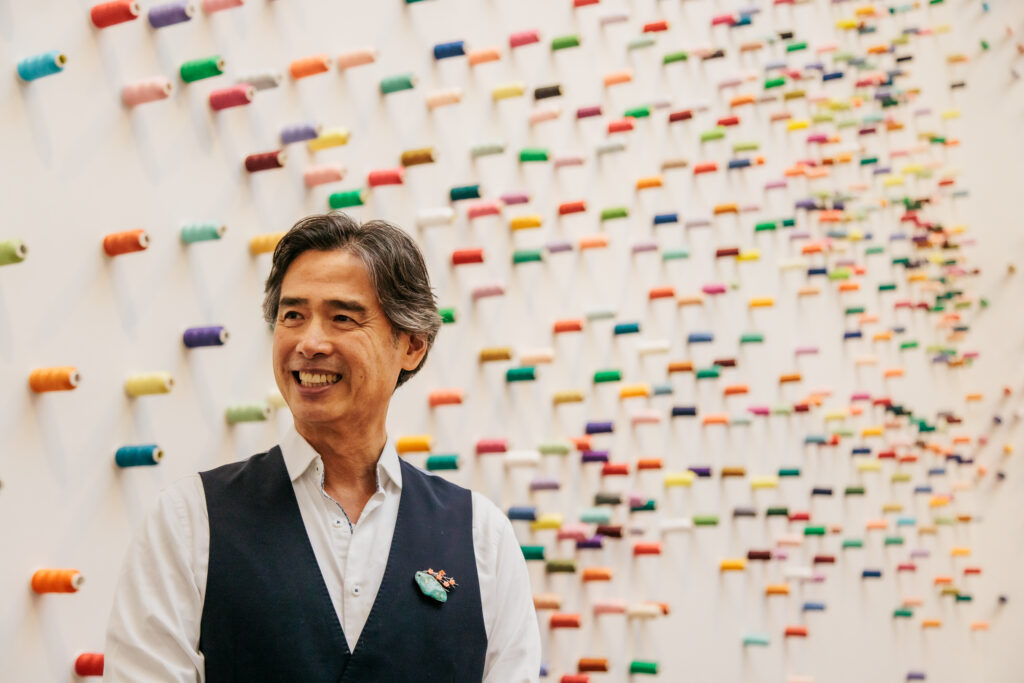
Lee Mingwei stands in front of his piece ‘The Mending Project’ at the DeYoung. Photo by Vita Hewitt.
The first piece you will encounter is a reproduction of Picasso’s Guernica, rendered in gentle shades of black and brown sand. The original painting is based on the events of April 27, 1937. Hitler’s Air Force, acting in support of Franco, bombed the small Spanish town of Guernica in Northern Spain. It was a defenseless city without military significance, a subject that some might find uncomfortably familiar today. The original painting is an iconic work depicting the horrors of war.
Local Journalism for Working stiffs
We write for the poets, busboys, and bartenders. We cover workers, not ‘tech’, not the shiny ‘forbes 100 bullshit’. We write about the business on your corner and the beer in your hand. Join the Bay's best newsletter.
Guernica in Sand will sit unfinished at the De Younge until March 23rd. At that time, Mingwei will complete the work. During this, he will invite museum visitors to walk through the piece. The disruptions of their footsteps to the material will transform the image. After this interactive part of the performance, the artist and his assistants will sweep the sand up into a hill using the gestures of a storm. It is a meditative reminder that history moves in a cyclical pattern. The act becomes an empowering gesture to give us the ability to change the outcome by moving through it.
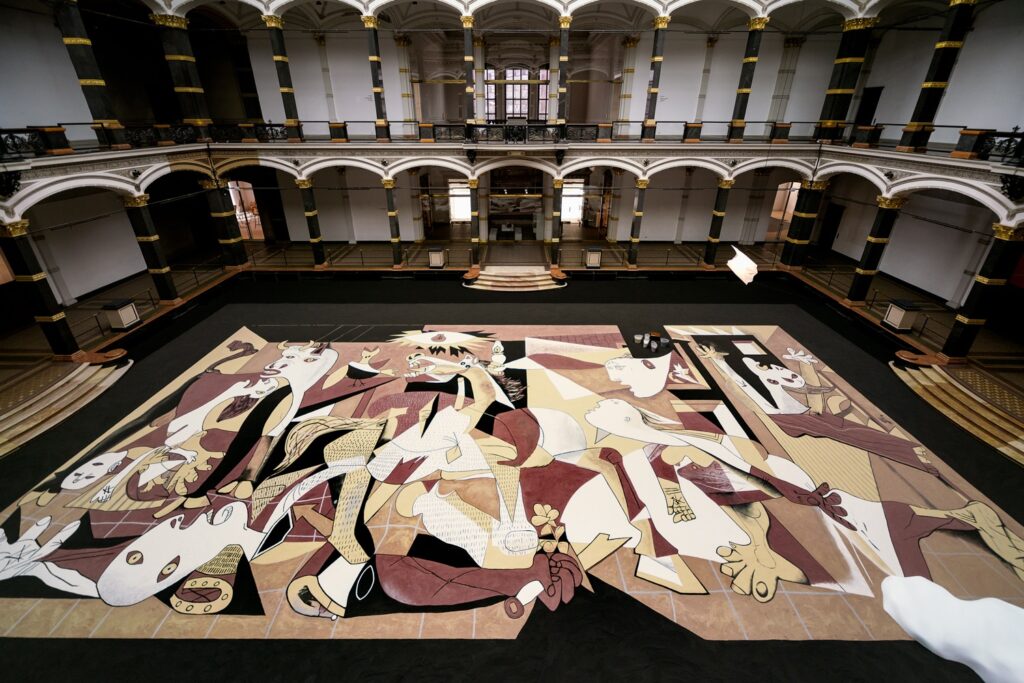
Lee Mingwei (American, b. Taiwan, 1964), “Guernica in Sand,” 2006-present. Mixed media interactive installation: Sand, wooden island, lighting, 1300 x 643 cm
Walking farther into the exhibition you will come upon a darkened room. Three tall, flat-roofed enclosures beckon you with soft light. Inside each space is a small desk equipped with letter writing materials. A sign politely requests that you remove your shoes before entering.
This is The Letter Writing Project. If you have missed the opportunity to tell someone something important, this might be a chance to remedy that. The letters may contain subjects like regrets in love or a goodbye to a family member, among other things. A visitor has the option to seal up the letter. The museum will mail it if addressed, or they can leave it unsealed for others to read. The letters that are not mailed will be sent to Mingwei’s studio. He currently has over 60,000 letters and plans to one day burn them in a ritual.
This project is inspired by the artist’s late grandmother. “When she passed away I had all these things I wanted to say to her but it was too late. So I wrote all these letters. Because of that, I thought maybe somebody else has the same idea. Therefore these three booths are for people to write letters that they never had the time to write.” Says Mingwei.
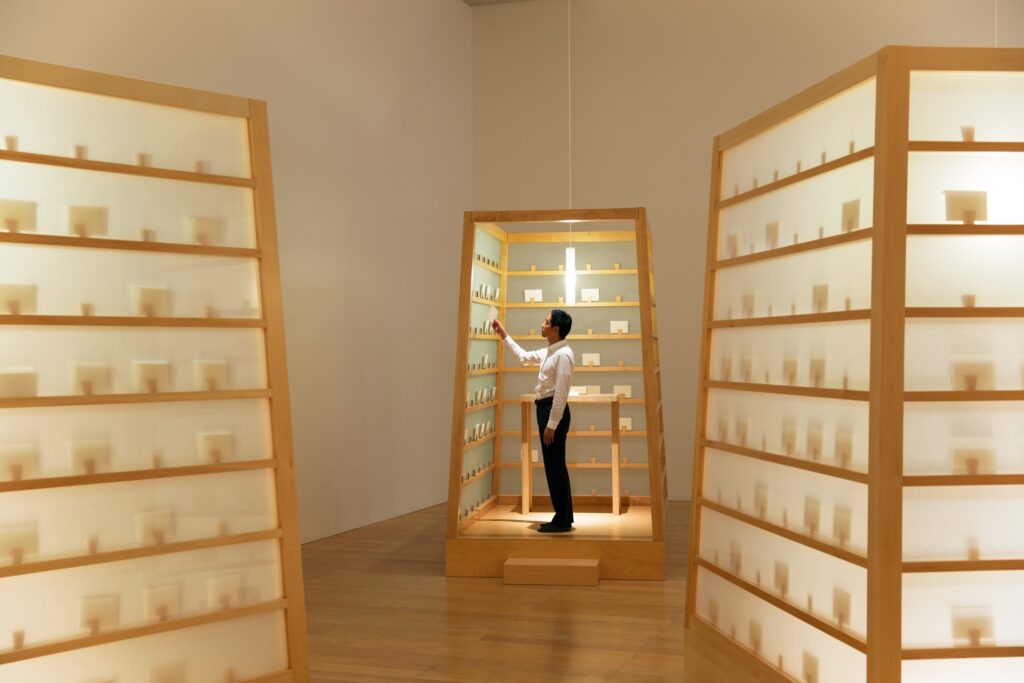
Lee Mingwei (American, b. Taiwan, 1964), “The Letter Writing Project,” 1998-present. Mixed media interactive installation, wooden booth, writing paper, envelopes, 3 pieces, 290 x 170 x 231 cm each. Photo Courtesy of Mori Art Museum, photo by Yoshitsugu Fuminari
“these three booths are for people to write letters that they never had the time to write.”
– Lee Mingwei.
Leaving the darkness behind, your eyes will have a pleasant shock as they are greeted with spools of thread in every color mounted on white walls. You have found The Mending Project.
A smiling woman sits at a table in the expansive room. She is mending a rip in a grey sweater with brightly colored threads. Across from her, a man waits patiently. The woman’s name is Leslie Chan. She is collaborating with Mingwei. Visitors to the exhibit are welcome to bring ripped or torn clothing. Chan will repair the items with artistic interpretation.
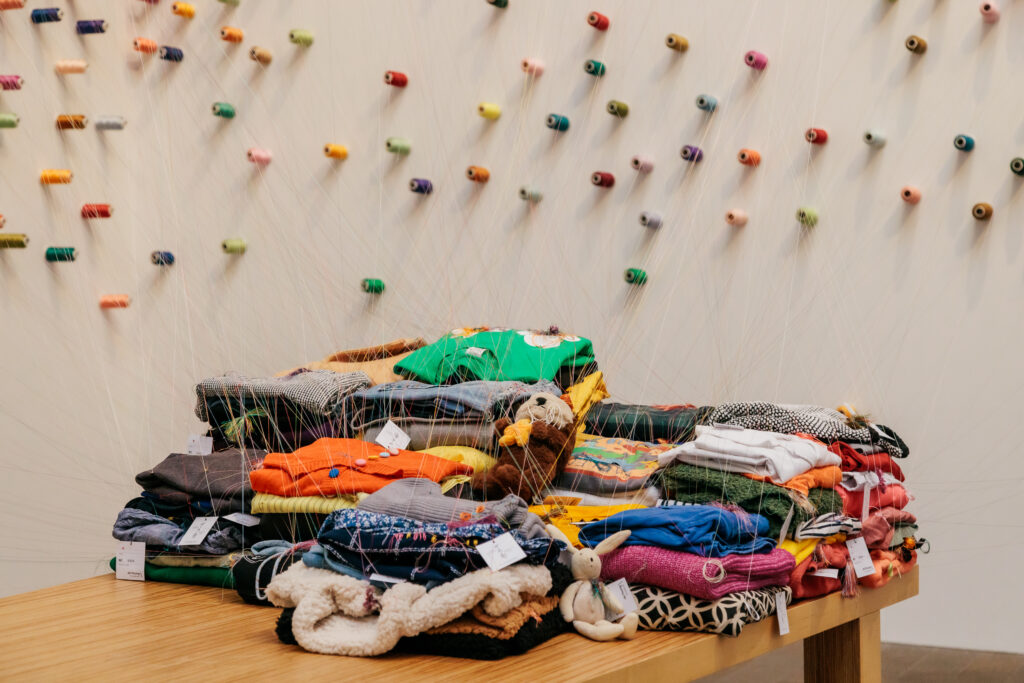
Some articles of clothing brought to ‘The Mending Project’ at the DeYoung will be kept and connected to the threads on the wall. Photo by Vita Hewitt.
Mending clothing becomes an act of care in subtle opposition to the mechanics of fast fashion. The worn items that have suffered a rupture become whole once more. Instead of making a repair that is hard to see, the thread stands out and celebrates the scar. The item, which might in other circumstances have been thrown away, now lives as a different iteration of wholeness.
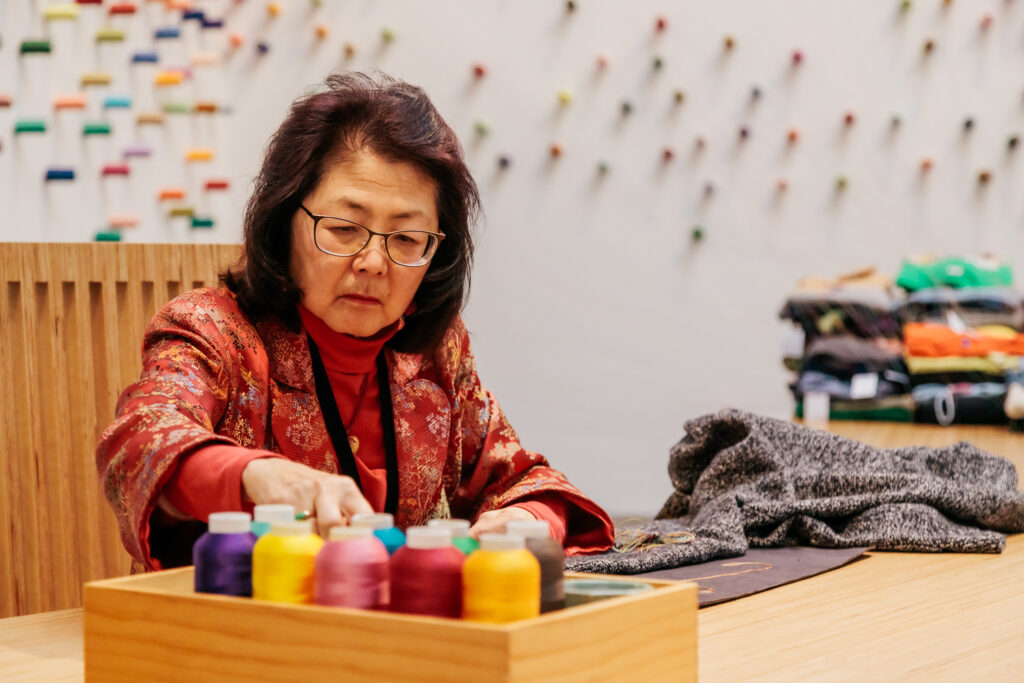
Leslie Chan repairs an article of clothing for a museum guest as a part of Mingwei’s Rituals of Care. Photo by Vita Hewitt.
Upstairs, in a well-lit room of late 19th and early 20th-century landscape paintings and marble sculptures, sits a single white chair. A woman dressed in vibrant jewel tones appears. She is the opera singer Chea Kang. Silently, she pulls a woman from the crowd and leads her to the chair. A song is offered and the woman in the chair nods acceptance. The occupants of the room cease all activity as Kang fills the space with a song selected from Schubert Leider (songs written for one voice).
The song may only be sung with consent. These are usually sung to many people in a theater. Somehow, when Kang focuses the power of this music on a single person, the gesture becomes a moment of hope.
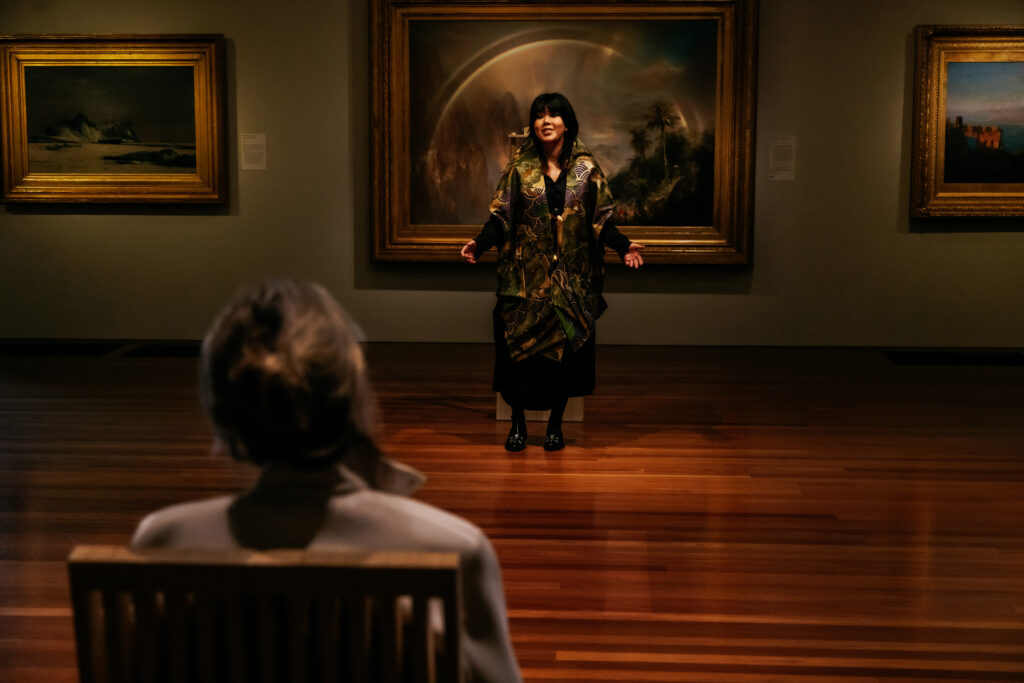
Chea Kang sings to a museum Guest as a part of Sonic Blossom in Lee Mingwei’s Rituals of Care at the DeYoung. Photo by Vita Hewitt.
It is rare that a show in a museum has such sincere intentions to engage the public on so many levels.
Each step tells us as much about the artist as it does about ourselves. Mingwei’s works are born of his personal life experiences. That he is able to draw from his memories, fears and trauma to create vessels to help his viewers mend and transform themselves, is an unexpected gift.
I recommend that you try to get to this show at least once. Sonic Blossom will only happen at select times so be sure to check the website before you go. Performances and activations will happen throughout the exhibit’s duration. Minnesota Street Projects will host Chaque Souffle une Danse on April 5th.
Guernica in Sand Performance
Sat, Mar 23 \ Noon – 4 pm
The Mending Project
Sat, Feb 17 – Sun, July 7
11 am – 3 pm
For more information and tickets visit de Young’s website : Here

Howdy! My name is Katy Atchison and I'm an Associate Editor for Broke-Ass Stuart.
I want to take the time to say thank you for supporting independent news media by reading BrokeAssstuart.com. Supporting independent news sources like Broke-Ass Stuart is vital to supporting our community because it amplifies the voices of a wide variety of diverse opinions. You also help support small businesses and local artists by sharing stories from Broke-Ass Stuart.
Because you're one of our supporters, I wanted to send over a pro-tip.
Our bi-weekly newsletter is a great way to get round ups of Broke-Ass Stuart stories, learn about new businesses in The Bay Area, find out about fun local events and be first in line for giveaways.
If you’d like to get our newsletter, signup right here, it takes 5 seconds.


